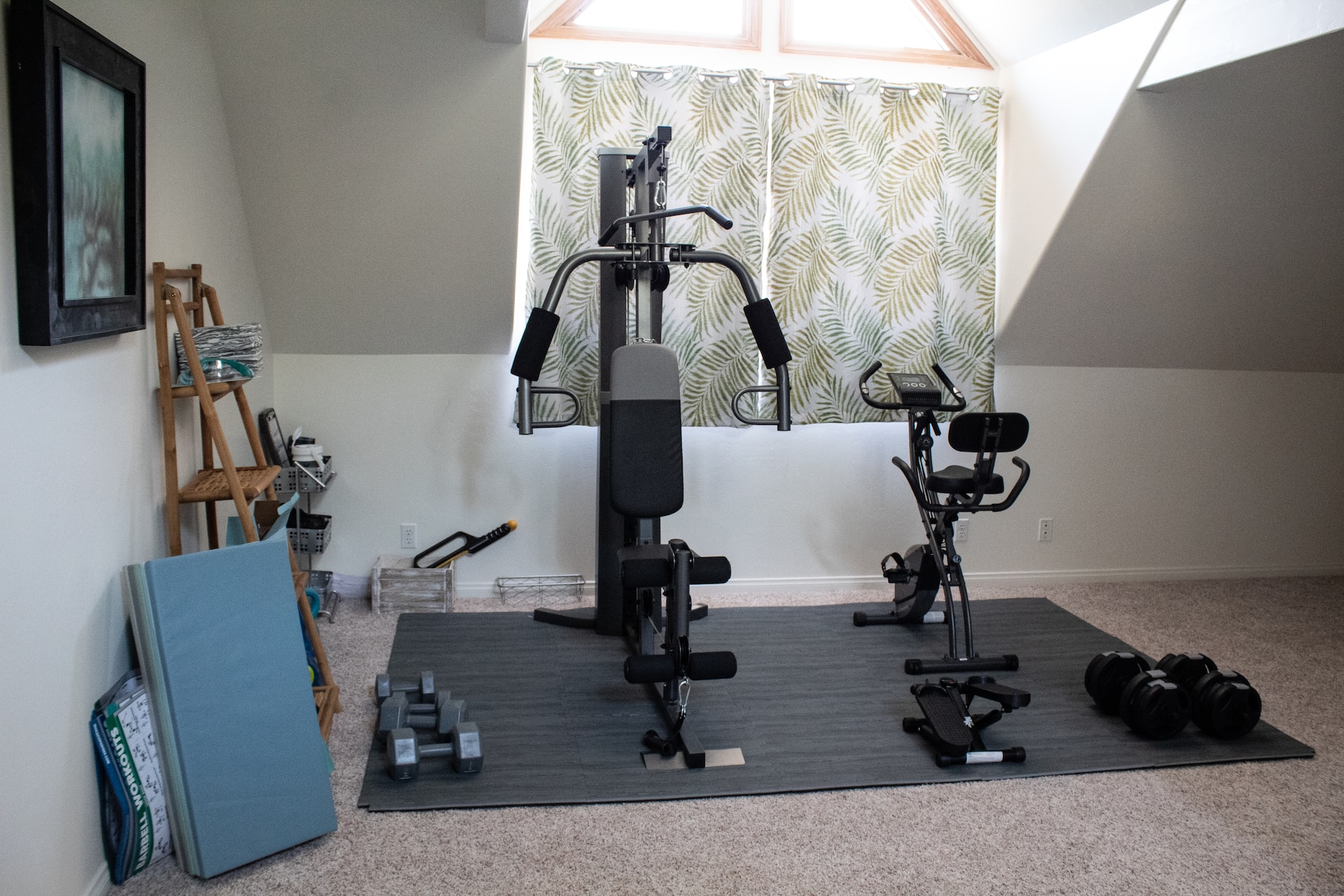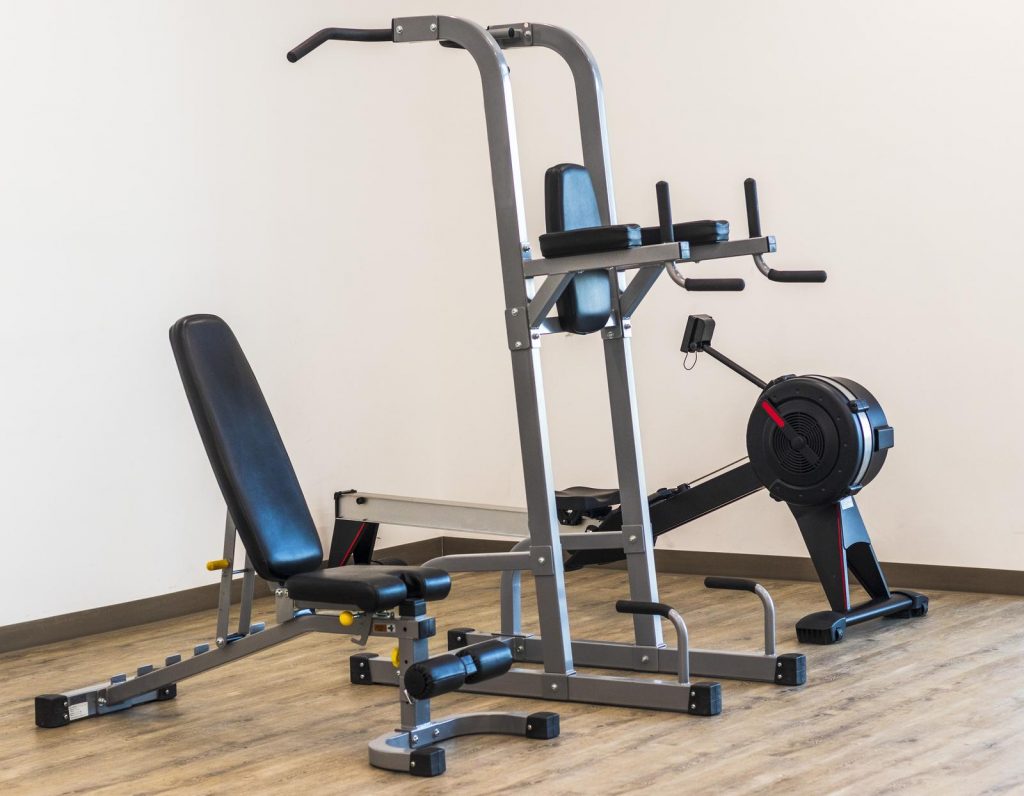
Home Gym Layouts: Smart Space-Saving Solutions
Are you tired of struggling to find a dedicated space for your fitness routine at home? We’ve got you covered with some ingenious space-saving ideas and layouts that will transform even the smallest corner into your personal workout haven.
Having a home gym is essential, especially in today’s fast-paced world. It not only saves you precious time by eliminating the need to commute to a fitness center but also provides the convenience and flexibility to work out whenever suits you best. But what if you don’t have an entire room to spare? That’s where these space-saving solutions come into play.
From clever storage options to multifunctional gym equipment choices, we’ll help you make the most of every square inch without compromising on functionality or style. So, get ready to transform your home into a fitness sanctuary!
Evaluating Your Space for a Home Gym
Assessing available square footage
Before diving into creating your home gym, it’s crucial to assess the available square footage in your space. Measure the dimensions of the room or area where you plan to set up your gym. This will give you an idea of how much floor space you have to work with and help determine what equipment can fit comfortably.
Considering ceiling height and ventilation
In addition to floor space, it’s essential to consider the ceiling height and ventilation in your chosen area. Some exercise equipment, such as treadmills or ellipticals, may require extra headroom due to their height or movement range. Ensure that there is enough clearance from the ceiling for these types of machines.
Proper ventilation is also vital for a comfortable workout environment. Make sure there are windows or sufficient airflow in the room to prevent stuffiness and keep the air fresh during intense workouts.
Determining electrical and flooring requirements
Next, consider any electrical and flooring requirements for your home gym setup. Certain exercise equipment may need access to power outlets, so ensure that there are nearby electrical sources available.
Opt for materials that provide adequate support and cushioning while being durable enough to withstand heavy machinery or weights. Rubber mats or interlocking foam tiles are popular choices as they offer shock absorption, reduce noise levels, and protect both your equipment and floors from damage.
To make an informed decision about which type of flooring suits your needs best, think about the exercises you’ll be performing and whether they involve impact (such as jumping) or require stability (like weightlifting).
Creating a functional layout
Now that you’ve evaluated your space based on square footage, ceiling height, ventilation, electrical requirements, and flooring considerations; it’s time to create a functional layout for your home gym.
Consider arranging your equipment strategically so that it maximizes both space utilization and ease of use. For example, placing cardio machines like treadmills or stationary bikes near windows can provide a pleasant view and natural light while you work out.
Ensure that there is enough clearance around each piece of equipment to move freely without any obstructions. This will help prevent accidents and injuries during your workouts.
Incorporate storage solutions such as shelves or racks to keep your exercise accessories organized and easily accessible. This will help maintain a clutter-free space and make it more inviting for your workouts.
By evaluating your available space, considering ceiling height and ventilation, determining electrical and flooring requirements, and creating a functional layout, you’ll be well on your way to designing a space-saving home gym that meets all your fitness needs.
Remember, the key is to optimize every inch of the space you have while ensuring a safe and comfortable environment for your workouts.
Read Also: The Essential Gym Equipment of a Great Home Gym Setup
Essential Fitness Equipment Selection
Choosing versatile equipment for small spaces
Selecting versatile equipment is key. You want to make the most of your available area without compromising on the variety of exercises you can perform. Look for equipment that can be used for multiple purposes and target different muscle groups. This way, you can maximize your workout options while minimizing the amount of space required.
Consider investing in adjustable dumbbells or resistance bands. These compact and versatile tools allow you to adjust the weight or resistance level according to your fitness goals and preferences. With just one set of adjustable dumbbells or a set of resistance bands, you can perform a wide range of exercises targeting various muscle groups.
Prioritizing based on fitness goals and preferences
When selecting equipment for your home gym, it’s important to prioritize based on your specific fitness goals and preferences. Are you looking to build strength, improve cardiovascular endurance, or focus on flexibility? Understanding your priorities will help you choose the right equipment that aligns with your objectives.
For strength training enthusiasts, investing in a power rack or a set of kettlebells could be beneficial. A power rack provides stability and safety for heavy lifting exercises such as squats and bench presses. On the other hand, kettlebells are compact and versatile tools that can be used for both strength training and cardiovascular workouts.
If cardio is more your style, consider getting a foldable treadmill or an exercise bike that can easily be stored away when not in use. These types of equipment take up minimal space while still providing effective cardiovascular workouts.
Exploring multi-functional equipment options
To optimize space utilization in your home gym, explore multi-functional equipment options. These are pieces of equipment that combine several exercises into one machine, saving both space and money.
One example is a functional trainer or cable machine with various attachments like pull-up bars, cables, and weight stacks. This versatile equipment allows you to perform a wide range of exercises, including strength training, functional movements, and even rehabilitation exercises.
Another multi-functional option is a yoga mat or exercise ball. These simple yet effective tools can be used for yoga sessions, core workouts, stretching exercises, and balance training.
By incorporating multi-functional equipment into your home gym setup, you can maximize the variety of exercises you can perform while minimizing the space required.
Read Also: The Importance of Proper Flooring in Your Home Gym Setup
Designing and Organizing a Small Home Gym
Maximizing space is key. With limited square footage, it’s crucial to utilize clever storage solutions and efficient layouts to create a functional workout area.

Maximizing wall space for storage solutions
In a small home gym, every inch of space matters. One effective way to save space is by utilizing the walls for storage solutions. Install sturdy hooks or racks on the walls to hang your gym equipment such as resistance bands, jump ropes, or even weight plates. This not only keeps your equipment organized but also frees up valuable floor space.
Consider installing wall-mounted shelves or cabinets where you can store smaller items like water bottles, towels, or workout accessories. This helps in keeping everything within reach while minimizing clutter on the floor.
Utilizing vertical storage racks and shelves
Vertical storage is another great option for optimizing space in a small home gym. Invest in vertical storage racks that can hold multiple sets of dumbbells or kettlebells without taking up much floor area. These racks allow you to stack the weights vertically instead of horizontally, making them ideal for compact spaces.
Consider using wall-mounted shelves specifically designed for holding exercise balls or yoga mats. These shelves keep these bulky items off the ground while still being easily accessible when needed.
Incorporating modular furniture for flexibility
Modular furniture offers versatility and adaptability in a small home gym setup. Look for multifunctional pieces that can serve different purposes depending on your workout routine. For example, invest in an adjustable bench that can be used for various exercises like chest presses or step-ups.
Another option is to choose foldable equipment such as folding treadmills or collapsible weight benches that can be stored away when not in use. This allows you to maximize your space and create a more flexible workout area.
By incorporating these space-saving ideas and layouts, you can transform even the smallest of spaces into an efficient and functional home gym. Remember to declutter regularly and keep only the essential equipment that you frequently use. This will help maintain an organized and motivating workout environment.
Decluttering and Storage Optimization Strategies
Implementing effective organization systems
Implementing effective organization systems is key. You want to maximize the use of every inch in your workout area. One way to do this is by using labeled storage bins or baskets to keep your equipment organized and easily accessible. By categorizing your items, such as resistance bands, dumbbells, or yoga mats, you can easily find what you need without wasting time searching through a cluttered mess.
Utilizing storage bins, baskets, or hooks
Storage bins, baskets, and hooks are essential tools for optimizing storage in a small home gym. Consider investing in clear plastic bins that can be stacked neatly against the wall or under a bench. These bins not only keep your equipment tidy but also allow you to see what’s inside without having to rummage through them. Baskets can be hung on walls or placed on shelves to store smaller items like jump ropes or hand weights.
Hooks are another fantastic option for hanging larger pieces of equipment such as resistance bands or yoga mats. Install hooks on the walls or behind doors to make use of vertical space and keep these items off the floor. This not only saves space but also prevents any potential tripping hazards.
Read Also: How to Choose & Set Up a Bench Press Rack in Your Home Gym
Minimizing clutter by keeping only essential items
In a small home gym, it’s crucial to minimize clutter by keeping only the essential items you regularly use for your workouts. Assess your equipment and determine what is necessary for achieving your fitness goals. If there are any items that have been collecting dust and taking up valuable space, consider donating them or storing them in an off-site storage unit if they hold sentimental value.
By decluttering and streamlining your workout area, you create an environment that promotes focus and efficiency during exercise sessions.
Creating designated zones for different activities
To optimize space usage further, consider creating designated zones within your home gym for different activities. For example, you can have a dedicated area for strength training exercises, another area for cardio workouts, and a separate space for stretching or yoga. By having specific zones, you can organize your equipment accordingly and create a more functional and efficient workout space.
Utilizing wall-mounted storage solutions
Wall-mounted storage solutions are excellent options for saving floor space in a small home gym. Install shelves or cabinets on the walls to store items like towels, water bottles, or workout accessories. This not only keeps these items easily accessible but also frees up valuable floor space for your exercise routines.
Bottom Line
Congratulations on completing the sections on evaluating your space, essential fitness equipment selection, designing and organizing a small home gym, and decluttering and storage optimization strategies! You now have a solid foundation for creating a space-saving and efficient home gym. By maximizing the use of your available space, carefully selecting the right equipment, and implementing effective organization and storage solutions, you can transform any small area into a functional workout space.
So go ahead, and take the first step towards building your dream home gym. Get creative, get organized, and get ready to enjoy the convenience of working out in the comfort of your own home. Your fitness journey starts here!
